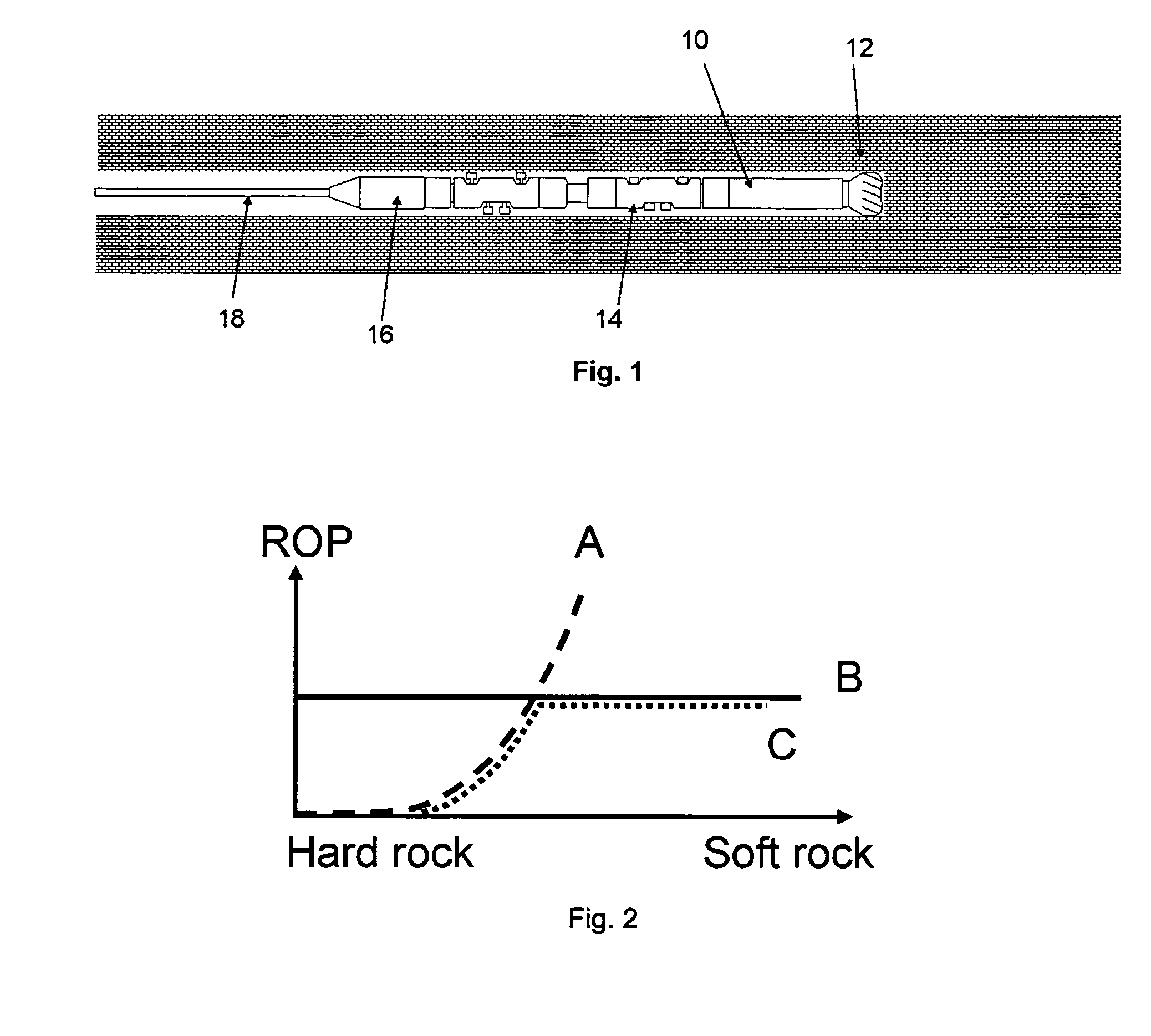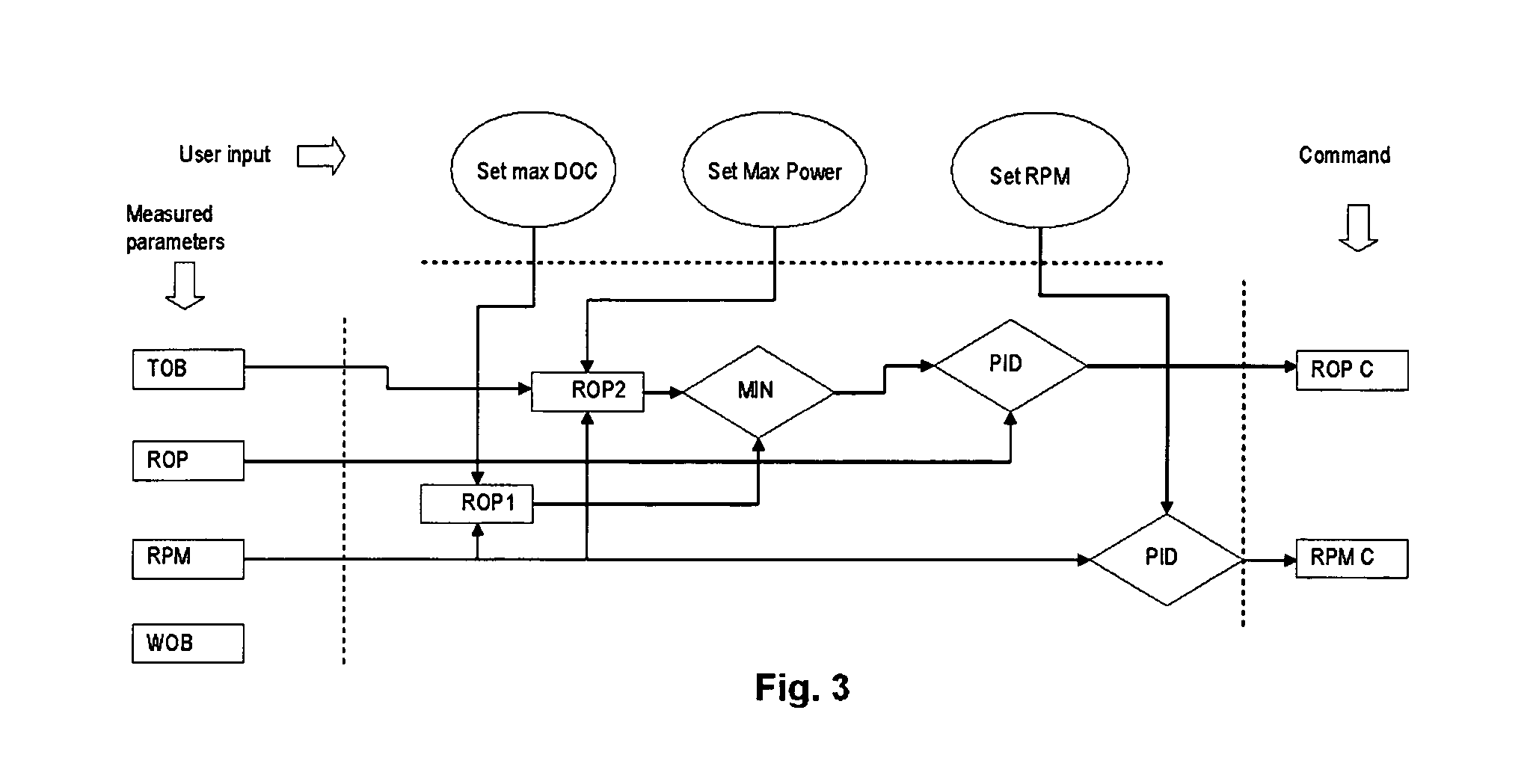Drilling System
a drilling system and drilling technology, applied in the field of drilling systems and methods, can solve the problems of process producing cuttings of a size and volume, limited horizontal reach, and large size and weight of a typical spool of coiled tubing for the hosting capacity of platforms
- Summary
- Abstract
- Description
- Claims
- Application Information
AI Technical Summary
Benefits of technology
Problems solved by technology
Method used
Image
Examples
Embodiment Construction
[0030]The invention is based on control of the drilling process by controlling the penetration per bit revolution (Depth of Cut control). Because the depth of cut reflects the size of the cuttings produced, such control can be used to create relatively small cuttings at all times (smaller than in conventional drilling), whose transport over a long distance requires much less power.
[0031]In conventional drilling systems (including previous CTD systems), the actual drilling operation is performed by applying controlled weight to the drill bit (WOB) that is rotated from surface or with a drilling motor to provide RPM to the bit, resulting in penetration into the formation (ROP). The torque and RPM encountered at the drill bit (TOB) is a product of the resistance of the formation and the torsional stiffness of the drill string to the rotary drilling action of the drill bit. In effect, the actively (but indirectly) controlled parameters are WOB and RPM. TOB and ROP are products of this c...
PUM
 Login to View More
Login to View More Abstract
Description
Claims
Application Information
 Login to View More
Login to View More - R&D
- Intellectual Property
- Life Sciences
- Materials
- Tech Scout
- Unparalleled Data Quality
- Higher Quality Content
- 60% Fewer Hallucinations
Browse by: Latest US Patents, China's latest patents, Technical Efficacy Thesaurus, Application Domain, Technology Topic, Popular Technical Reports.
© 2025 PatSnap. All rights reserved.Legal|Privacy policy|Modern Slavery Act Transparency Statement|Sitemap|About US| Contact US: help@patsnap.com



